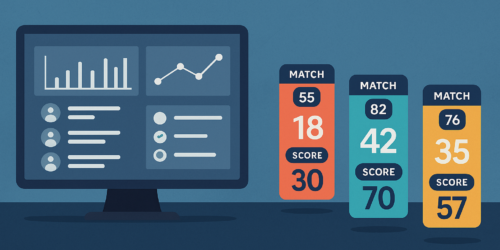What's in this article?
The dynamic world of sales has been reshaped by the advent of technology, with lead scoring at the forefront of this transformation. As businesses strive to optimize their sales processes and enhance conversion rates, traditional lead scoring methods are increasingly being outpaced by predictive models. This shift is not just a trend but a strategic necessity in today’s competitive landscape.
Understanding Predictive Lead Scoring
Predictive lead scoring leverages data, machine learning, and statistical algorithms to assess a lead’s likelihood of converting into a customer. Unlike traditional scoring, which depends on static, often subjective criteria, predictive models continuously learn and adapt from new data inputs to provide highly accurate insights.
Sales organizations that adopt predictive scoring often see reduced lead churn and improved pipeline velocity. These models empower teams to allocate resources toward the highest-impact opportunities, aligning daily actions with long-term revenue goals.
Advantages of Predictive Models
- Accuracy: Predictive models evaluate thousands of data points—something no manual process can match.
- Scalability: As lead volume grows, these models maintain precision and efficiency.
- Adaptability: Predictive models evolve alongside market trends and buyer behavior, keeping strategies aligned in real time.
In industries like financial services, businesses using predictive models have achieved up to 20% gains in conversion rates by targeting leads with the highest purchase likelihood.
Implementation Challenges and Solutions
Implementing predictive scoring does pose challenges, including:
- Data Integration: Disparate sources must be unified into one reliable system.
- Data Quality: Models require accurate, clean, and current data for effectiveness.
- Change Management: Stakeholder alignment and buy-in are crucial.
ProPair’s platform is purpose-built to overcome these hurdles with minimal disruption. It offers native CRM integration, automated model training, and sales-friendly interfaces that drive quick wins and long-term success.
Impact on Sales Teams and ROI
The integration of predictive lead scoring transforms how sales teams operate:
- Increased Productivity: Less time spent on low-conversion leads.
- Faster Sales Cycles: Reps engage leads when they’re most likely to convert.
- Stronger ROI: Companies report up to 30% improvements in productivity and a noticeable uplift in revenue.
Predictive scoring shifts the focus from qualifying leads to converting them—amplifying the overall performance of sales teams.
Future Outlook and Trends
The next evolution of lead scoring will harness advanced AI, real-time personalization, and deeper cross-channel insights. As models become more granular and proactive, sales orgs will be equipped to predict not just who will buy, but when and how.
ProPair remains at the forefront of this transformation, evolving its AI-powered solutions to meet the growing demand for intelligent, scalable lead management.
Frequently Asked Questions
What is predictive lead scoring?
It’s a dynamic, AI-driven method of ranking leads by conversion potential using behavior, demographic, and historical data.
How does predictive lead scoring improve ROI?
By surfacing high-value leads faster, it shortens sales cycles, boosts conversions, and reduces wasted effort.
What are the common implementation challenges?
Data fragmentation, system integration, and user adoption. A phased rollout and clear communication can mitigate these.
How does it impact sales teams?
It frees teams from repetitive scoring tasks, allowing them to focus on high-impact selling and relationship-building.
What’s next for lead scoring?
Deeper AI integration will enable real-time recommendations and continuous performance optimization across the funnel.
Taking Action
Discover the transformative power of predictive models by integrating ProPair’s AI into your sales strategy.
👉 Book a demo and start optimizing your lead management today.



